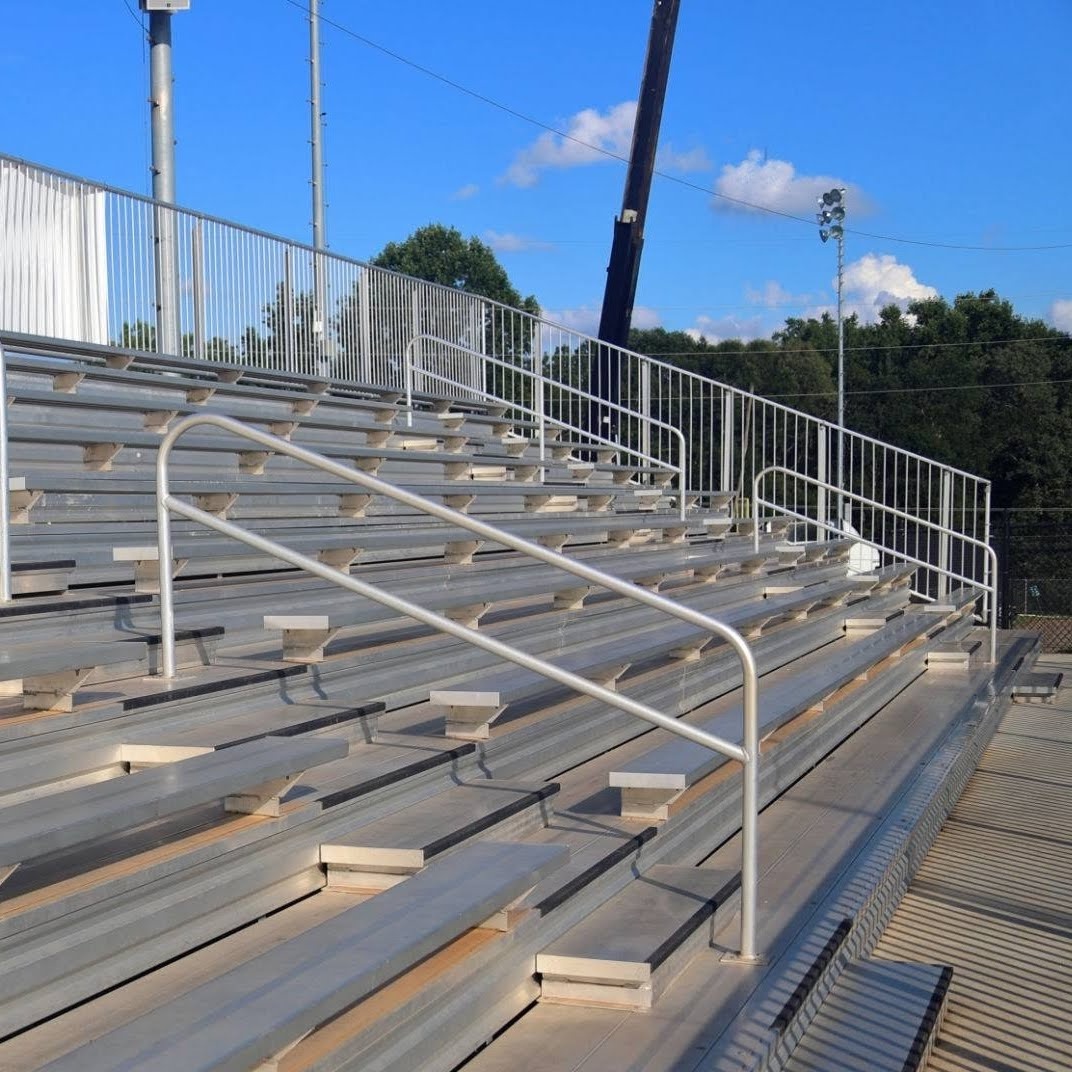When purchasing used bleachers, you’re often looking for a cost-effective way to provide seating for your venue or event. However, with used bleachers come potential risks, from structural integrity to safety compliance. To ensure you make the right choice, it’s crucial to evaluate the quality of used bleachers before committing to a purchase. In this comprehensive guide, we'll cover everything you need to know to assess used bleachers for safety, durability, and value.
Understanding Bleachers and Their Components
Bleachers are tiered seating structures commonly used in sports venues, schools, and other public events. To understand how to evaluate used bleachers, you must first be familiar with their key components:
- Frames: The backbone of bleachers is typically made of steel or aluminum.
- Seats: The actual sitting surfaces, which can be metal, plastic, or wood.
- Decks and Walkways: The horizontal surfaces that connect the seating rows.
- Guardrails and Handrails: Safety features that prevent falls and provide support.
- Footrests: horizontal surfaces at the bottom of each row to provide comfort and safety.
With this understanding, let’s dive into the steps to evaluate the quality of used bleachers.
Step 1: Assess Structural Integrity
When evaluating used bleachers, structural integrity should be your top priority. Weak or damaged frames can lead to safety hazards. Here's how to assess the structure:
- Visual Inspection: Look for visible signs of damage, such as cracks, bends, or rust. Pay special attention to welds and joints, as these are critical points for structural stability.
- Check for corrosion: If the bleachers used for sale are made of steel, check for rust. Rust can weaken the structure and lead to long-term problems.
- Test for Flexibility: If possible, apply pressure to various parts of the frame to test for undue flexibility or bending. A rigid structure is a sign of a well-built bleacher.
Step 2: Inspect seating and decking.
The seating and decking are crucial for comfort and safety. Follow these steps to ensure they are in good condition:
- Seat Condition: Check for cracks, splinters, or loose fittings in the seats. Ensure they are securely fastened to the frame.
- Decking Integrity: Look for signs of wear and tear, such as warping, cracking, or loose boards. A sturdy deck is vital for safety.
- Material Type: Determine the material of the seats and decks. Metal is durable but can rust, while plastic and wood can deteriorate over time. Assess the condition based on the material type.
Step 3: Examine Safety Features
Safety features are essential for preventing accidents and ensuring compliance with safety regulations. Here's what to look for:
- Guardrails and Handrails: Ensure they are securely attached and at the correct height. Check for rust, bends, or other damage.
- Stability: Test the bleachers for wobbling or instability. A stable structure is critical for safety.
- Safety Barriers: Check for any gaps or openings that could pose a safety risk. Ensure there are no sharp edges or protruding parts that could cause injury.
Step 4: Check compliance with regulations.
Bleachers must comply with safety regulations, including building codes and accessibility standards. Here's how to ensure compliance:
- Building Codes: Check with your local building authority to understand the codes that apply to bleachers. Ensure the used bleachers meet these requirements.
- Accessibility Standards: Determine if the bleachers comply with accessibility standards, such as the Americans with Disabilities Act (ADA). This includes providing wheelchair-accessible seating and ramps.
- Load Capacity: Verify the bleachers' load capacity and ensure it meets or exceeds your requirements. This is crucial for safety during large events.
Step 5: Evaluate Age and Usage
The age and previous usage of the bleachers can provide valuable insights into their condition and durability. Here's how to assess this factor:
- Age: Determine how old the bleachers are. Older bleachers may require more maintenance and repairs.
- Previous Usage: Find out where the bleachers were previously used. Bleachers in high-traffic areas may have more wear and tear.
- Maintenance History: If possible, ask for the maintenance history. Regular maintenance can indicate a well-kept structure.
Step 6: Consider future maintenance and repair costs.
Used bleachers may require ongoing maintenance and occasional repairs. To evaluate the overall value, consider the following:
- Maintenance Requirements: Determine what type of maintenance the bleachers will need and how often. This can include painting, tightening bolts, or replacing parts.
- Availability of Replacement Parts: Check if replacement parts are readily available for the bleachers you are considering. This can affect future repair costs.
- Cost of Repairs: Estimate the cost of any necessary repairs or modifications to bring the bleachers up to standard.
Step 7: Get a Professional Opinion
For added assurance, consider hiring a professional to inspect the bleacher seats for sale. A structural engineer or bleacher specialist can provide expert insights and identify potential issues you might have missed.
- Professional Inspection: A thorough inspection by a professional can give you peace of mind and ensure safety.
- Written Report: Ask for a written report detailing the condition of the bleachers and any recommendations for repairs or modifications.
Conclusion
Evaluating the quality of used bleachers requires careful consideration of structural integrity, safety features, compliance with regulations, and future maintenance costs. By following these steps, you can make an informed decision and ensure that your bleachers provide safe and reliable seating for your venue or event. Remember, safety should always be your top priority, so don't hesitate to seek professional advice if needed.


No comments yet